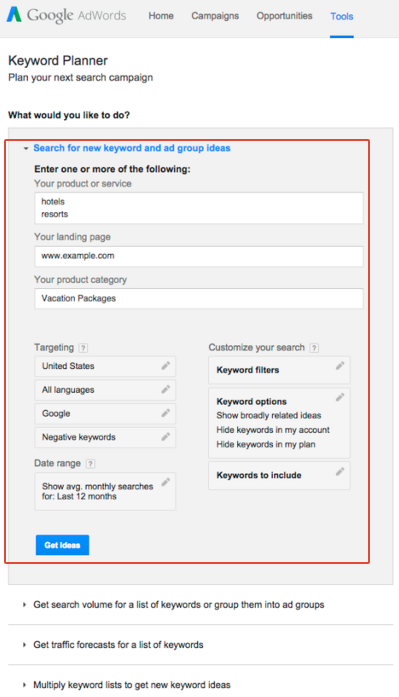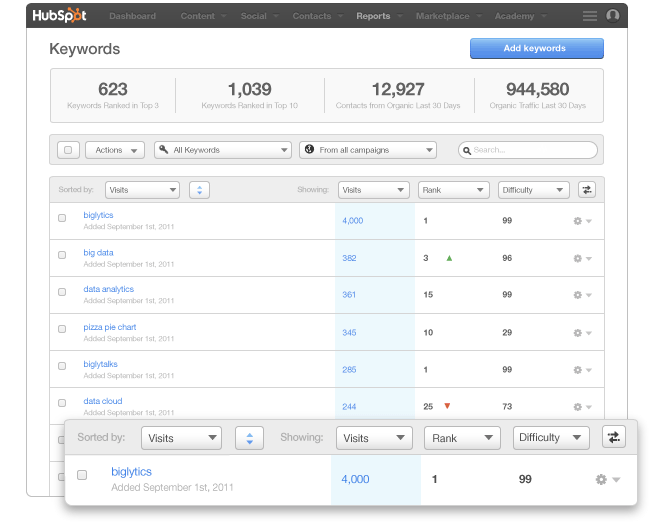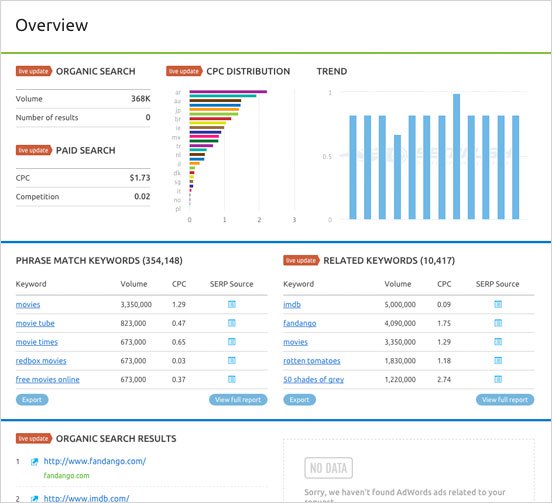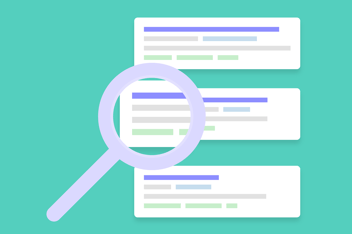Inbound Marketing has proven to be one of the most effective methods of increasing website visitors, leads, and customers for your business.
Do you know the power of Inbound Marketing for business growth?
Used correctly it will attract your ideal customers, convert them, and close them via a strategy that promotes your services at the right place and at the right time.
In this post, we will discuss how three stages of Inbound Marketing: Blogging, Keywords, and Offers can help you to generate leads and grow your business.
Step 1: Understand your audience
Step 2: Start with a topic and a working title
Step 3: Create an engaging introduction
Step 5: Write the main body of content
Step 6: Proofread your post, finalise the title, and check for keywords
Step 7: Insert a call-to-action (CTA) at the end
High quality and valuable to your target audience
In-line with your business and the services you offer
Targeted to the right buyer persona, at the right time
Click here to book a FREE CONSULTATION on how Inbound Marketing can grow your business.
Inbound Stage 1: Blogging
Wondering if blogging is for you? Not sure if blogging actually works? Well, the answer is, it most certainly does! Companies that write blog posts have 97% more inbound links than those who do not which are crucial for SEO (search engine optimisation).
Blog posts are SEO gold, attract new visitors, and, if you are blogging on a regular basis and providing useful and meaningful content, you will build your reputation within your industry. In fact, companies that published 16+ blog posts per month got about 4.5X more leads than companies that published 0-4 monthly posts (HubSpot, 2015). You can learn more about how to blog for promotion and profit here or have a look at our take on content writing here.
Writing the perfect blog can seem a daunting process so to help we have broken down the blog best practices into 7 essential steps to follow:
Step 1: Understand your audience
Before you start writing your content, have a clear understanding of who your target audience is and what problems they need solutions to. This step is where having your buyer persona ready really works.
Download our Buyer Persona Template for Free to create yours!
Step 2: Start with a topic and a working title
You need to pick a topic to write about. The topic can be quite broad at this stage; for example, you could write about ‘small business growth’.
Once you have established a topic, you need to create a working title. A working title is only a temporary title at this stage. Your final title will need to be thought about carefully to contain the keyword you are targeting.
It is important to remember at this stage that the titles do not need to be perfect, they should just be specific enough to guide you through writing your blog post.
Step 3: Create an engaging introduction
The key is to draw a reader in and grab their attention immediately. If you lose your reader at the start of your blog, before they have gotten to the main content, they will stop reading before they have had a chance to get to the good stuff.
There are many ways to engage a reader, such as asking a question, starting with an interesting fact, or leading with a statistic that is relevant to their business or industry. For more ideas on writing a good introduction, read this simplified guide.
Step 4: Organise your content
Sometimes blogs can contain far too much information in them, for both the reader and the writer. The remedy for this probelm is to try and organise your information so it does not intimidate the reader by its length or the amount of content it has. The ideal length of a blog post is between 600 - 1000 words.
To help you organise your content, it is a good idea to come up with an outline of headings or subcategories that you would like to cover in your blog piece. This way you will have a guideline to work from and will not be tempted to go off-topic whilst writing your blog.
Step 5: Write the main body of content
Now it’s time to actually start writing your main body content. With your outline or guideline at the ready, it is time to begin filling in those blanks.
Make sure you use your outline to help you stay on track whilst expanding on each of the points you want to discuss. Write about what you know, and, if necessary, include any additional research to gather more information, examples, and data to back up your points. Remember, it is important to refer back to all external sources used and provide correct attribution.
If you find it hard to get into a writing ‘flow’ do not worry, this writer's block happens to the experts too. Luckily for us, there are many tools that you can use to help you improve your blog writing: Here is a list of the 34 best tools to get you started.
Step 6: Proofread your post, finalise the title, and check for keywords
Proofreading and editing are crucial parts of the writing process, so be sure not to skip this step.
You will need to finalise your title now. Titles with 6-13 words attract the highest and most consistent amount of traffic (HubSpot, 2016) so be sure to fit it within this criteria.
It is always a good idea to have a second pair of eyes to look through your blog. Why not ask a colleague to read over your content, as they are more likely to pick up on any grammar mistakes that you may have missed.
If you want to brush up on your self-editing skills, this article on ‘How To Become A More Efficient Editor’ will help to get you started.
Step 7: Insert a call-to-action (CTA) at the end
A CTA indicates what you want your readers to do next, whether that be to download your eBook, take part in your online survey, register for a webinar, or even read a related blog post.
CTAs are not only beneficial to you but also your lead, as they allow you to offer more valuable content that is similar to the subject of the post they just finished reading. Below is an example of a CTA that we created.
Inbound Stage 2: Keywords
Keywords are more than just a group of words thrown together. They are the foundation of any successful Inbound Marketing strategy. Without planning and targeting specific keywords your company website could become lost in the infinite space that is the internet.
To create effective keywords, you need to research the words your prospects are searching for that are related to your industry and what you offer. Using these keywords will set the stage for of all your content creation, whether the keywords are used on your website, blogs, eBooks, social media etc.
Why is it so important to use keywords? Well, the first position on Google search results on desktop has a 34% click-through rate. If you are not ranking, you are simply not being found (Advanced Web Ranking, 2015; Hubspot, 2015)
Luckily, there are many examples of free and paid keyword research tools that you can use to help with the process of selecting keywords for your business.
Free Keyword Research Tools
1. Google Keyword Planner
Google has always been the go-to place for people seeking answers, and they do have some very useful tools, the Keyword Planner being one of them.
If you place one keyword, multiple keywords or even your website address into your keyword planner, Google will provide a list of related keywords. Alongside this tool, they also provide metrics to compare how much competition there is or how many searches those words have on a global scale.

2. Google Trends
Another free useful tool is Google Trends. This tool allows you to enter multiple keywords and filter them by location. The results will then show you just how much interest there is online for that specific location, surrounding that keyword.
Paid Keyword Research Tools
1. HubSpot’s Keywords Tool
The keywords tool by HubSpot helps you to research keywords and decide which are best to use for optimising your website and will track the results from each one.
What is the benefit in tracking your keywords? The answer is simple; tracking keywords actually allows you to see which keywords are bringing in traffic and leads to your business.

2. SEMrush
SEMrush is another paid keyword tool which actually allows you to keep a track of how your competitor’s keywords are performing.
The good news about this tool is that it allows you to improve your keywords to knock your competitors off that top spot on Google and other search engine results.

To learn more keyword tools and other tools that are available, read this article on The 9 Best Keyword Research Tools
Inbound Stage 3: Offers
What is an Offer? An offer is a piece of content that solves your prospect’s problem. An offer can be anything from a webinar to whitepapers, eBooks, or even a guide.
What matters the most when creating the right offer is that your prospects can use this offer to solve their problem. Offers are a great way to help potential customers to overcome their challenges but they are also a great way to turn them into leads.
Putting the right offer out to potential clients at the right time can be the solution they have been looking for, which in turn builds the reputation of your business.
The offer examples mentioned above are great to implement and distribute to your prospects; however, the following items need to be considered in order for any offer to be effective in generating leads for your business.
Your offers must be:
High quality and valuable to your target audience.
It is important to remember that if you’re expecting visitors to complete a form on your website in exchange for an offer, the offer must be compelling enough for that visitor to fill out the form.
Many people do not share their contact details very easily, so be sure that your offer is a worthwhile exchange.
In-line with your business and the services you offer.
Think about the types of offer that your target audience would benefit from and focus your offer around fixing a particular issue or helping them to overcome a particular challenge.
For example, your offer could be an eBook about ‘5 Ways Accountants Can Save you Money’. In this offer, you could establish that your target audience is in need of an accountant, and help them answer their questions by giving them a short list of the services accountants offer and more details of how these services would benefit them.
Targeted to the right buyer persona, at the right time.
A truly great offer takes into consideration your buyer personas (also known as your target market) and where they currently are in the sales process.
Why is this important? If your client is already in the consideration stage of the buying process you don’t want to be sharing an awareness stage offer, or worse, a decision stage offer before they are ready to buy.
To read more about buyer personas and their journey read What Is The Buyer’s Journey.
To Summarise
That’s it! The three crucial stages of Inbound Marketing - Blogs, Keywords, and Offers.
Stick to these fundamental concept stages in your marketing strategy and you will be well on your way to growing your business. So what are you waiting for? Get started today!
For more tips on lead generation and marketing, download our 30 Greatest Lead Generation Tips For Professionals.




